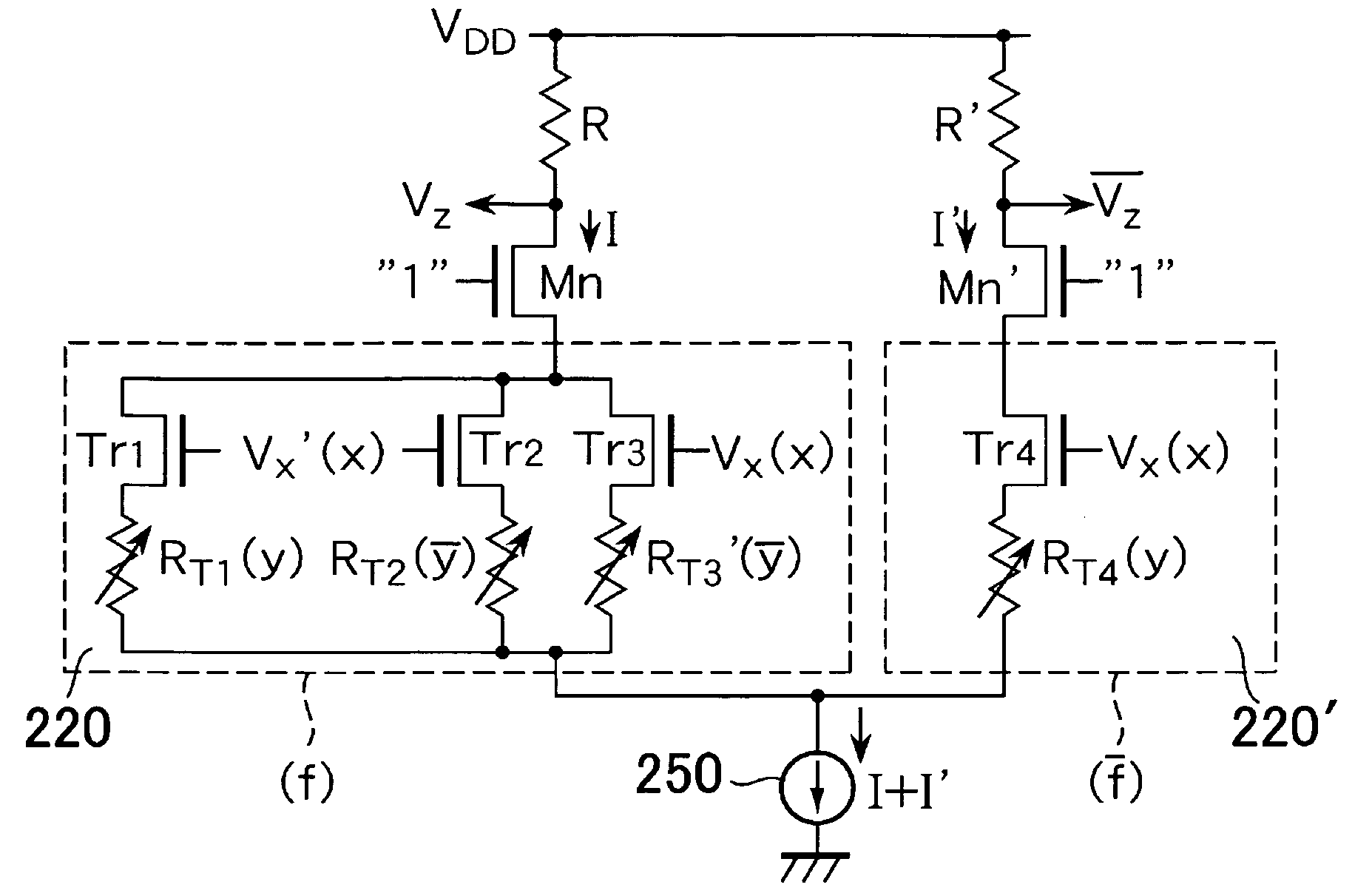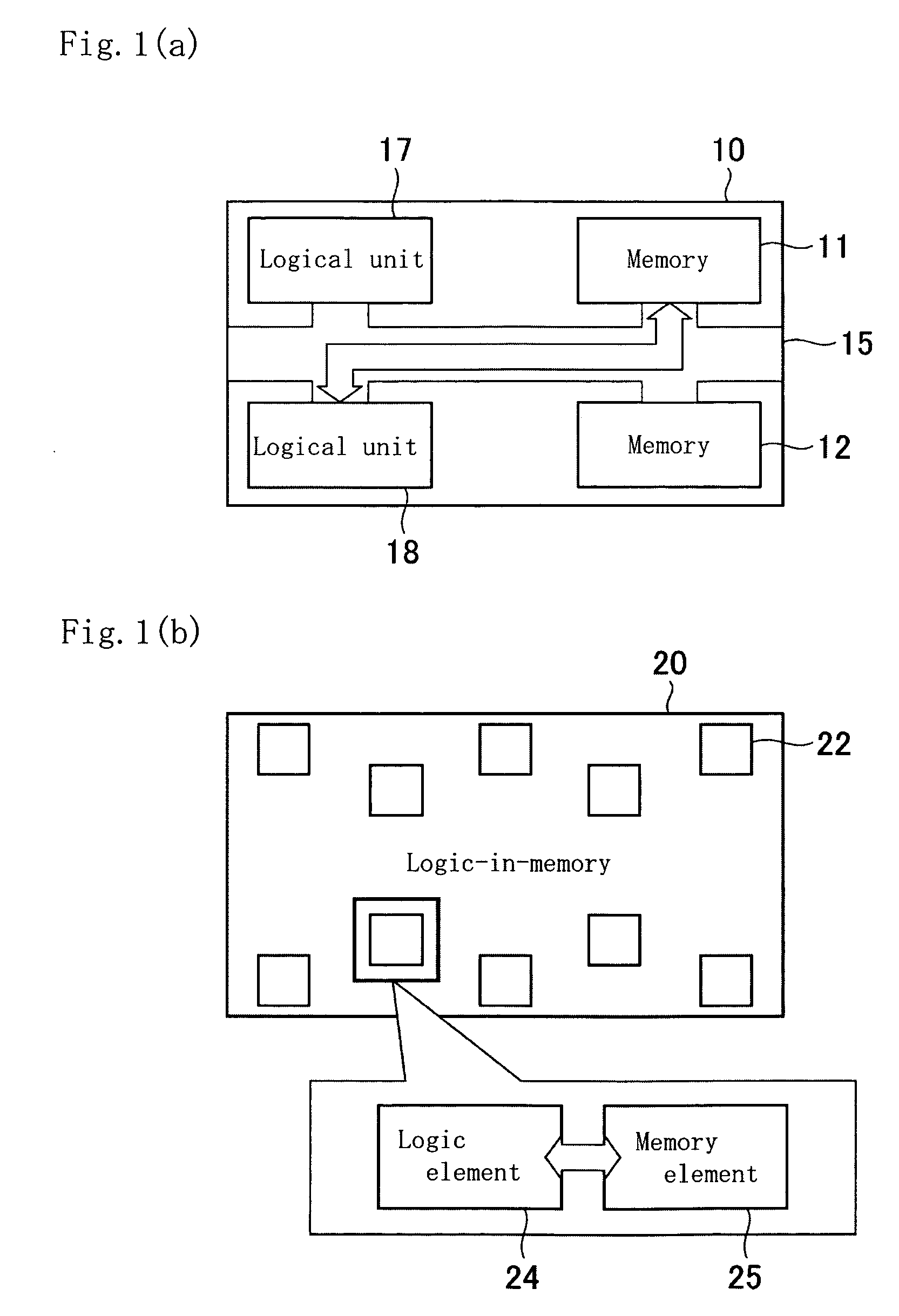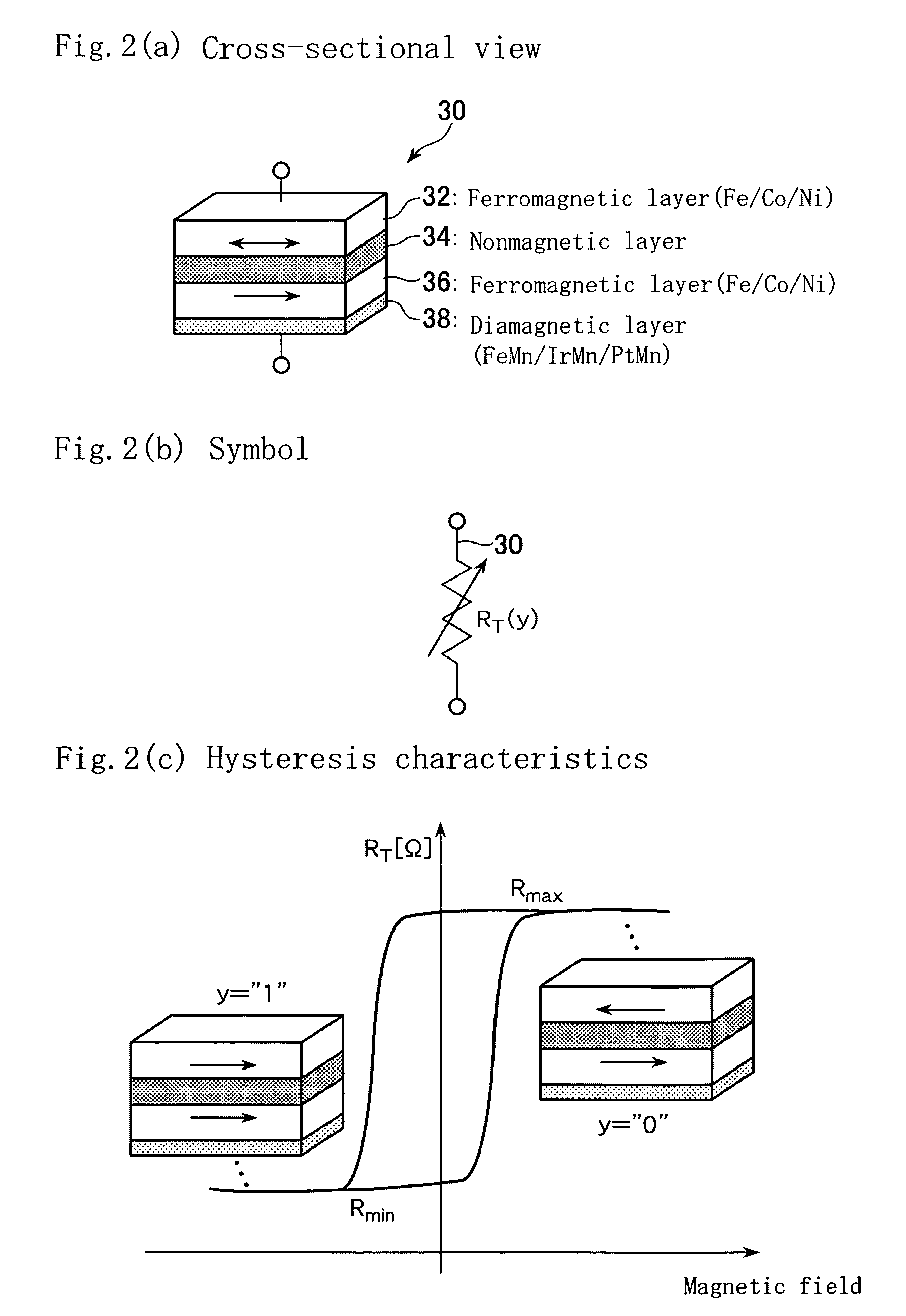Logic-in-memory circuit using magnetoresistive element
- Summary
- Abstract
- Description
- Claims
- Application Information
AI Technical Summary
Benefits of technology
Problems solved by technology
Method used
Image
Examples
Embodiment Construction
[0049] Preferred embodiments of the present invention will hereinafter be described referring to the accompanying drawings.
[0050]FIG. 4 is a view showing the overall configuration of a logic-in-memory circuit using TMR elements as magnetoresistive elements, i.e., variable resistive elements.
[0051] The logic-in-memory circuit 100 shown in FIG. 4 has binary inputs, i.e., an external input X and a memory input Y, and comprises an operation function for performing an operation f(X, Y) using the inputs X and Y and a memory function for storing the memory input Y. The operation result is obtained as a binary output Z. This kind of logic-in-memory circuit 100 consists of a TMR network 120 that includes TMR elements having operation functions and memory functions, a threshold detector 160 and an IV converter 170.
[0052] As shown, for example, in an AND operation network 122 in FIG. 5(b), the TMR network 120 is formed as a variable resistive element network by a series-parallel connection ...
PUM
 Login to View More
Login to View More Abstract
Description
Claims
Application Information
 Login to View More
Login to View More - R&D
- Intellectual Property
- Life Sciences
- Materials
- Tech Scout
- Unparalleled Data Quality
- Higher Quality Content
- 60% Fewer Hallucinations
Browse by: Latest US Patents, China's latest patents, Technical Efficacy Thesaurus, Application Domain, Technology Topic, Popular Technical Reports.
© 2025 PatSnap. All rights reserved.Legal|Privacy policy|Modern Slavery Act Transparency Statement|Sitemap|About US| Contact US: help@patsnap.com



